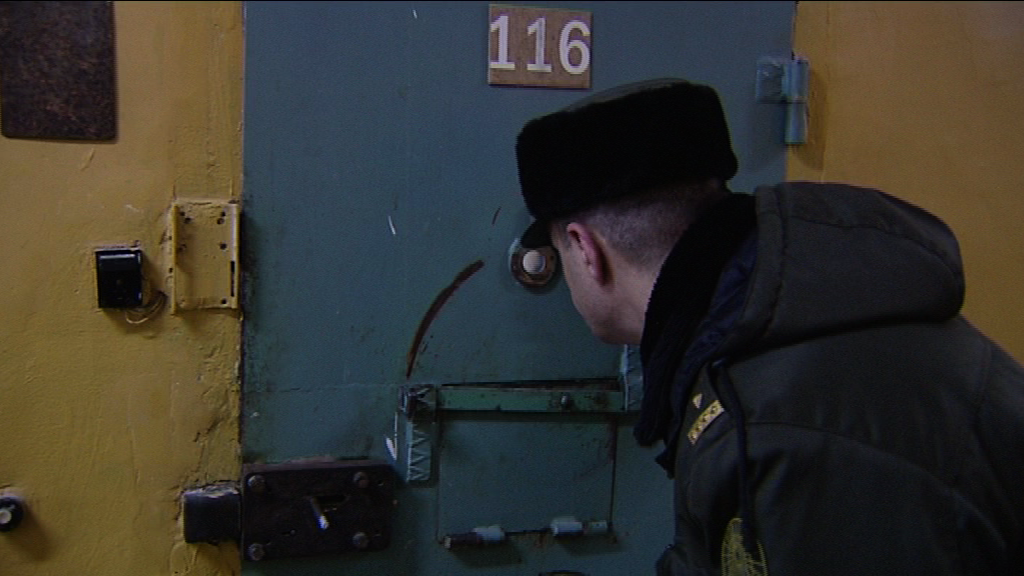
6AM. Six men are drinking moonshine at the shared table in one of the cells of the largest prison in Latvia. None of them cares about guards because often overnight there is just one for 400 prisoners.
Inmates Kots un Maks (both – nicknames) get into an argument. “You gonna get up?” Maks challenges Kot, who is sitting on his bed. “I’ll get up if I have to,” he replies. Maks grabs Kot by the shirt and throws him to the floor. Kot gets up, takes his shirt off and stands up against his attacker. Then a third man, Rižijs, gets involved. He hits Kot in the face with his elbow. The 34 year old collapses on the floor. But Maks isn’t done working the unconscious Kot over. By the time the other inmates put Kot back to his bed, the man has a bloody face, scraped elbows and knees as well as a bleeding wound behind his ear.
The guards arrived at 8AM and didn’t detect anything suspicious. All six cellmates were standing, Kot held up by Rižijs. Kot only received medical attention before lunchtime when he was already incapable of getting up from the bed and forming coherent sentences. Two hours later he was rushed to the hospital.
His cellmates claimed that Kot fell and hit against the concrete floor when he tried to stand on a wall separating the toilet from the rest of the room while trying to change a light bulb.
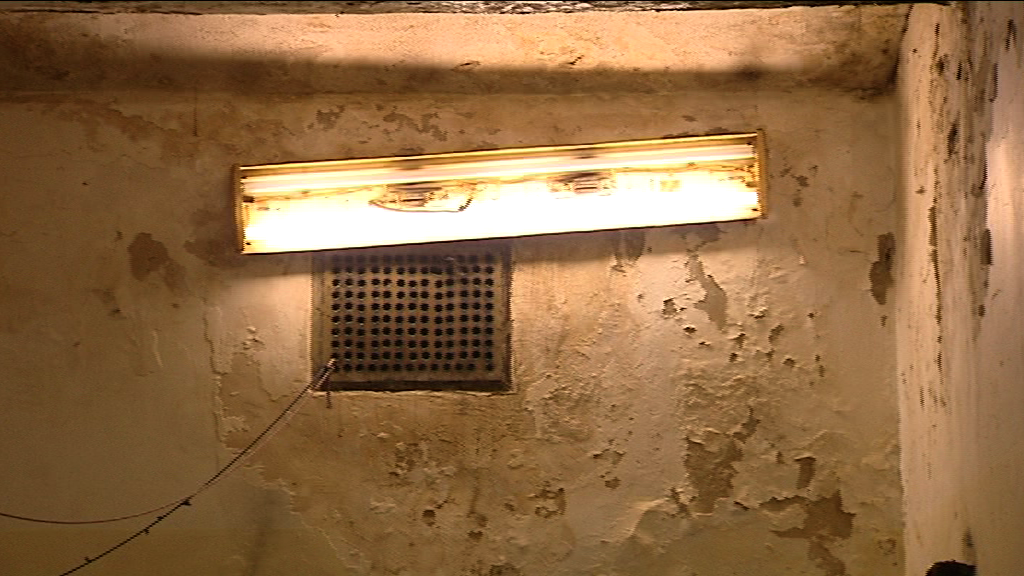
Central Prison. Photo: Nekā Personīga, TV3, 2011
The medics dismissed this claim stating that he had been hit in the head at least 6 times, as well his body, and had bruises that predated the situation..
Four days later Kot, who was in prison for drug use and dealing, was dead. A year later, his cellmate, Rižijs, who was in prison for theft, was tried for the murder of his cellmate because he dealt the killing blow.
Kots is one of the four people who have been officially reported to have died in Latvian prisons during the last five years.
One inmate in prison in Daugavpils, in eastern Latvia, was beaten to death by prison guards. Two other cases are still unsolved.
In Lithuania, statistics are similar. Every year on average one person is killed in prison. Estonia has one reported prison death in total.
Death is the visible part of prison violence. The invisibleare are “severe beatings, sexual assault, including rape, and psychological abuse”, according to the European Committee for the Prevention of Torture (CPT).
CPT and Ombudsman of Latvia appears to be the only ones concerned with the violence in the prisons. Inmates don’t talk about it out of fear. The prison management pretends there is no problem. Even now, nearly 25 years after Latvia regained it’s independence, the prison system still functions according to the traditions it inherited from the Soviet Union. Latvian prisons are considered more like torture camps, not correctional facilities.
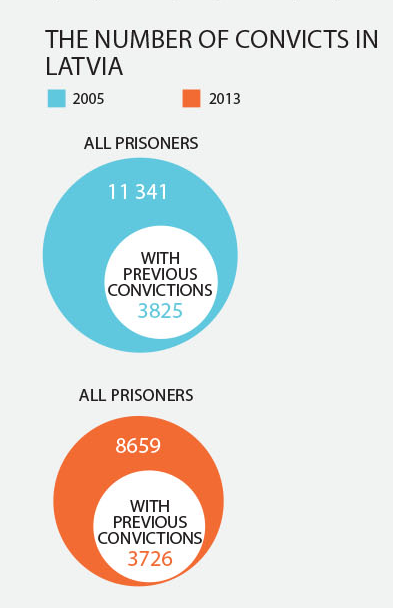
Infographic: Māris Diņģelis, Ir
Latvia has more than double the amount of prisoners than the average in the European Union and at least five times more than Norway, which is considered by some to be the example of how prison systems should be. Latvia and Estonia most commonly sentences criminals to 5 1- 10 years behind the bars. The average conviction length in the EU is 1 to 3 years.
But the heavy punishments do not magically transform the convicts into better people, rather vice versa. 51% of the people who were released after a full sentencing commit repeat felonies within the span of two years after release. These people are usually young men who couldn’t reintegrate back into the society.
Society thinks the heavy punishments create more safety, yet instead it manufactures more criminals.
The three castes
“Society doesn’t want to imagine that prison isn’t the end of the problem. The most important part is who will be the person coming out of that prison? Society wouldn’t feel safer if they realized that the person that comes back has spent years in inhumane conditions and learned even more methods to commit crimes,” said Ilona Supre (44), the chief of prison administration. “Usually it starts with petty theft like a mobile phone or jar of jam in the nearby summer cottage, but next time they are back in prison for a gang robbery, then battery and it could even end with murder.”
Such is the story of a 27 year old man named Artis (name changed). Prison already had an effect on his life when he was just 4 years old. His mother was imprisoned for stealing a piglet from the farm where she was working.
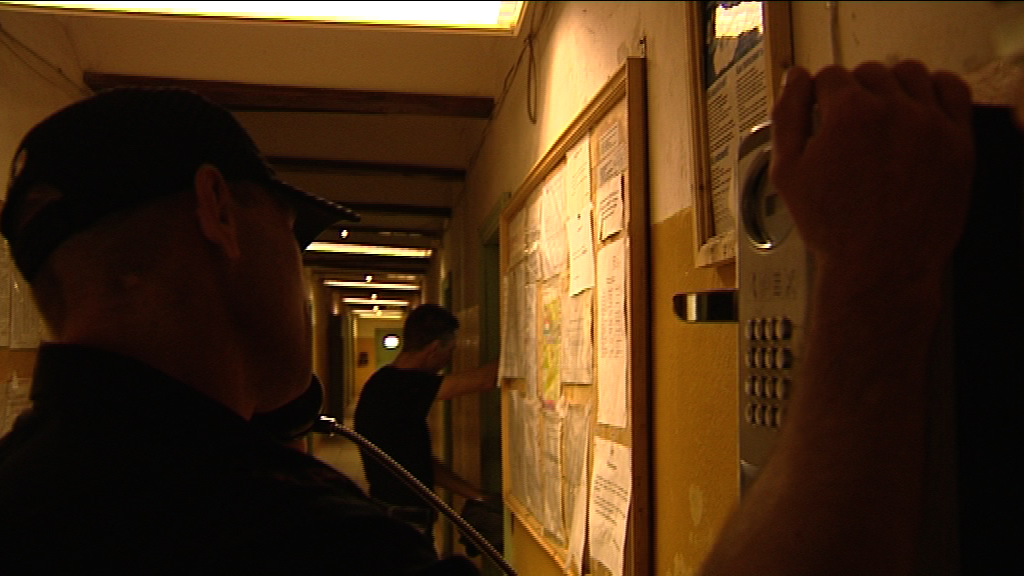
Prison in Jēkabpils, 2014. Photo: Nekā Personīga, TV3
Artis was put up for the adoption. He was doing well in his new adopted family, but then his foster mother lost her job. The boy started to “hustle”, selling gum and cigarettes at school. But there just wasn’t enough money, so he started to steal gasoline from cars. He was caught and sent to a youth correctional facility at age 17.
After being released he finished 12th grade and joined the University of Latvia with the intent of becoming a lawyer. He dropped out eventually.
One day, he got in to an argument with his sister and it escalated in to calling the police. He was initially put in probation, but later sentenced to imprisonment for not showing up for the hearing of the verdict.
After his release he got a job at a store. One day there was a theft and Artis was fired for it when his employer found out that he had been previously convicted even though there was no evidence linking him to the theft. The employer said he fired him because of “a breach of trust”.
A month later Artis went drinking at a friend’s place. He ended up murdering his friend.
When Artis was taken to one of the Latvia’s largest prisons, a guard asked where would he like to stay for the duration of his incarceration. Knowing that he would have to spend a long time in prison, Artis replied :“Where it’s quieter”. Wrong answer. He ended up in the lowest prison caste as a result.
There are three castes in the Latvia’ prisons hierarchy. Blatnije (from Russian – favor in exchange for another favor ) are the VIP caste. Mužiki (from Russian – implies that someone is “true man”) are the average thugs. And then there’s kreisie (from Latvian, word for “left”), the bottom feeders. The average thugs are subservient to the VIP caste or else they will be booted down to the bottom feeder level. The bottom feeders have no choice but to serve the thugs who only use them for their own purposes. The VIP prisoners don’t ever speak to or use the same utilities as bottom feeders.
Criminology expert and former chief of prison administration Vitolds Zahars says that the prison hierarchy is “a structure created by the prisoners themselves based on a sense of justice based on a set of values only understood by the prisoners themselves”.
Pedophiles and rapists are automatically deemed bottom feeders and they are kept in separate cells for their own safety. But prisoners can be booted down to the bottom feeder tier for even menial reasons like gambling debts or stealing food from other inmates.
Capitalism has brought some changes to the structure, though. In the prison of Jēkabpils an inmate recently entered the prison as a VIP by paying for the installation of new windows in the prison. A lack of money can also be a reason to be deemed a bottom feeder.
Over the past few years there have been several reported complaints about the quality of life on the lowest level. “Bottom feeders can’t be in the same place as the upper castes. Can’t use the same toilets, use the gym or use the computers,” writes one of the inmates.
Artis felt discriminated because he was put in to the low caste out of mistake. He didn’t think much of the caste system because during his prior convictions he was a thug, which is the caste the bulk of the inmates are.
Artis directs most of his anger at the prison management because it functions in a way that honors the rules of the prison hierarchy. He claims that his application for the vacant position of prison librarian was denied because the social worker told him “bottom feeders don’t get to work”. He was also denied work as an electrician, which was a profession he learned while in prison.
Artis filed complaints to the Ministry of Justice and the Prison Administration. The Administration dismissed the claim that there is a informal hierarchy in the prison system, but the Ministry of Justice replied in writing that “the system has existed for decades”. Artis went to court with complaints. He demanded they destroy the hierarchy where prisoners have the right to decide on and punish other prisoners and a compensation of LVL 240 000 (EUR 377 550).
The Ombudsman came to the same conclusions as Artis. When officials inspected Jēkabpils prison in 2008, they reported that they are “convinced that the prison management has legalized the prisoner hierarchy. The prisoners settle their disputes between themselves and the management does nothing.”
The management even used the internal hierarchy to discipline inmates and extort information about things like possession of drugs or mobile phones which are forbidden. Refusal to comply would boot the prisoner down to the bottom tier.
Even if the management tried to disrupt the informal hierarchy, it could fail. Artis noted in his letter to court that even if he was got the job there would probably be a backlash from the other inmates. When someone the upper tiers of the hierarchy didn’t approve the new cook in Jēkabpils prison he was quickly fired. They would ruin the food by secretly contaminating it with dirt or inedible items. If the psychological bullying fails, inmates start the hunger strike (real case in Centrālcietums, or Central Prison, in Latvia’s capital).
Artis did not receive his compensation, but he did bring the issue to light. District court refused his case because “the castes are a societal structure made by the inmates themselves and the administration had no responsibility for it”. When the case was resubmitted the court added that “all societal structures that segregate people create inequality between members of it.” Such is the case in prison as well and there is no authority to blame for it, according to the court.
Supreme Court disagreed. In 2012 it stated that it is the country’s responsibility to prevent violence in prisons as well as the informal hierarchy, because it is one of the main reasons for violence. The court cited CPT reports which emphasize that “the possibility of being a victim of battery, sexual assault, extortion and other forms of abuse is everyday life for many prisoners.”
Violence, but no perpetrators
The prison administration explains it’s reluctance for change by the fact that there is not enough money. But that is just one side of the problem. Academic studies in Scandinavia and Estonia both show that change requires the strong will to make it. Latvia lacks it – as proven, for example, by the reluctance to investigate the crimes in prisons, which would decrease violence.
In his court application Artis writes that “the violence I’ve been subjected to was not just beatings, but also sexual assault”. He had not spoken about it with the prison management because “over the years I’ve realised that there will not be any help, and I want to stay alive.”
The complaints prisoners write to Ombudsman usually are general and do not decribe the attacks in enough detail for prosecution. The inmates either do not believe that the investigations will be fair or are afraid of revenge.
Latvian prisons hold between 5000-6000 prisoners. Every year, on average 16 criminal investigations are opened (Estonia has about 80 cases a year and prison population is smaller). About 90% of the cases never reach the court as the evidence during investigations is deemed inconclusive. Usually the final conclusion is that prisoners hurt themselves by accident. Over the last seven years only two sexual assault cases have made it to court.
Investigations are done by prisons’ administrations. Both the inmates and CPT do not believe that they are properly done and often resemble the cover-up. CTP has suggested an independent inquiries as a solution, but the government’s promises have never been followed by action.
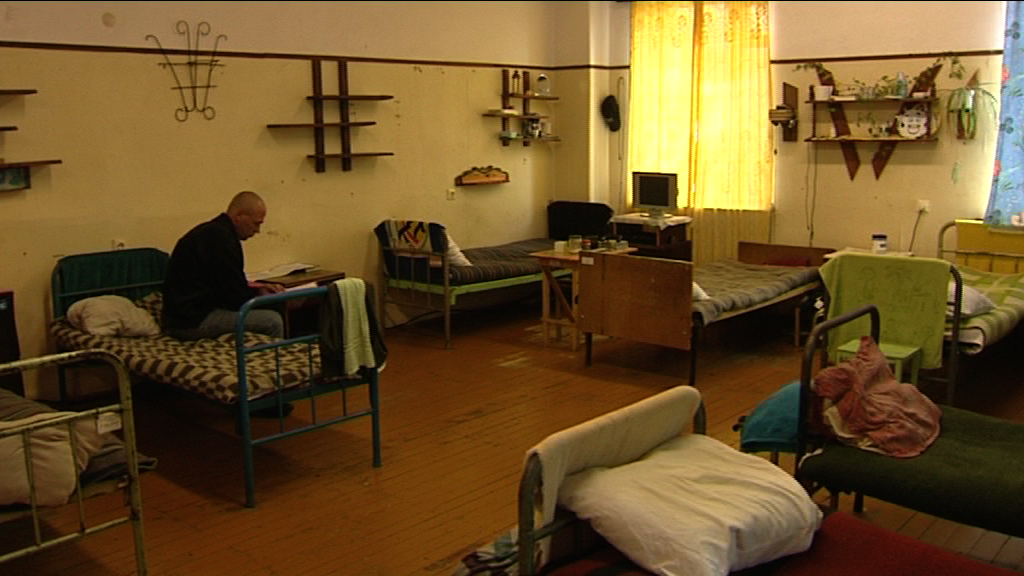
Prison in Jēkabpils, 2014. Photo: Nekā Personīga, TV3
Ilvija Pūce, a representative of the Committee, recalls how during the conference few years ago a representative of the state prosecutor’s office asked: “Why don’t we trust each other? Why do we suspect that the investigations in prisons are not objective?” Investigating officer chimed in: “We investigate objectively, it’s just that they are always guilty!” And then I thought about how impossible would it be to investigate your co-workers if the prisoners are the ones always at fault, if one believes they always provoke the situations,” Pūce said.
Sergejs Daņiļins, a former policeman who had been sentenced to life imprisonment for the kidnapping and murder of a teenager, met his end by provoking the prison guards.
In September of 2008 the guards made a full inspection of Daņiļins’ cell in Daugavpils prison. This meant that he had to fully undress. The guards claim that Daņiļins refused and attacked. He hit one guard in the face and knocked the other one down on the floor where he started to choke him. To stop Daņiļin the guards hit with their sticks at least 25 times across the body and head. Daņiļins crawled under the bed and then the guards hit him at least 17 times in ribs and stomach until they could drag him out. Daņiļins threw up and choked on his own vomit. The autopsy could not explain what induced the vomiting.
For their crime the two guards were sentenced to the financial penalty around the 10 minimum monthly salaries (around 2560 euro at the time) for excessive use of force. The CPT said it was unsure the punishment properly reflects the crime committed.
The refusal to create an independent investigation unit for prison crime in Latvia almost lead to an international scandal in 2013. The CPT was so angered by the unkept promises that it was considering a special statement about the state of prisons in Latvia. The CPT had previously issued such condemning statements only regards the three countries: Russia, Turkey and Greece.
Latva is discussing a plan to trust the investigation of the prison crimes to the special unit within the Ministry of Interior which deals with the crimes within the law enforcement agencies. Pūce says this is not the best solution, but it is more than nothing.
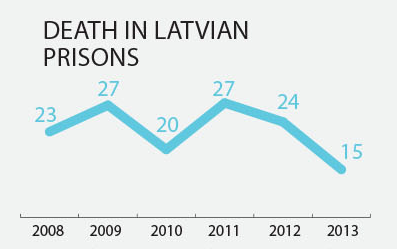
Infographic: Māris Diņģelis, Ir
Another indicator of the problems within Latvian prisons is the high suicide rate. 2012 was the worst year, 8 inmates committed suicide (in 2013 – 3 people). Almost half of those inmates were still waiting for the trial to start.
The administration has a huge influence on the prison environment. The former chief, veteran traffic policeman, Visvaldis Puķīte was the embodiment of society’s prejudices. One of the first things Puķīte did when started work in 2007 was getting rid of Prison Administration’s spokesman because “the people do not need to know what happens in jails”, remembers former prison’s PR chief, currently Member of Parliament, Kārlis Seržants.
In 2007 the European Court of Human Rights ordered the Latvian government to pay EUR 7000 to a prisoner who complained about inhumane treatment. “That man would smell and look worse outside of prison than in,” Puķīte offered. Suicide rates? “Free will, that’s all. I don’t think it’s our fault that he didn’t await the final hearding and judgement. He punished himself out of a moral principle” Puķīte told Diena, Latvian daily newspaper.
In the last decade the European Court of Human Rights has forced the Latvian government to pay EUR 67 000 euros for inhumane treatment of the prisoners.
What can one do?
A new administration and a new prison are two things that could change Latvia’s prison subculture in the next few years. In 2013, Ilona Spure (44) became the new Chief Administrator of prisons. She has MA degree in pedagogy and nearly 20 years of work experience in the prison system, the last being responsibility for the reintegration of the prisoners back into the society.
Spures’ priority is to finish a building the extension of the prison in Olaine by 2016 . The new section would be capable of rehabilitating up to 200 addicts (80% of prisoners are addicted to drugs or drink, but the prisons offer only short term rehab programs).
The new section costs 8.2 million euros. 15% are provided by Latvia and the rest funded by Norway.
“It will be a testing grounds where we’ll explore new approaches. This would include adjusting the attitudes of older employees of the system in order to make a change in the Soviet system” said Spure.

Prison in Daugavgrīva, Daugavpils, Latvia, 2014. Photo: Nekā Personīga, TV3
The correctional colony system of the USSR is still the basis for the prison system in Latvia and Lithuania. It’s main purpose was to re-educate prisoners by making them complete “five year plans” which existed for the whole economy. The prisoners lived in dorm-like prisons, freely roaming between the rooms. This entrenched the culture of violence and castes.
Breaking the tradition is Spures’ second prority. The new prison in Liepāja must be built by 2018. It would be the first new prison built in post-Soviet Latvia. But there is a chance that it won’t be built. It’s hard to explain to society why to spend 59 million euro for a new prison when “retired people need to count every cent,” says Spure.
Lithuania has also not built a single new prison since regaining it’s independence.
Estonia, on the other hand, has built two – in Viru and Tartu. These prisons cost slightly more than 100 million euro. There is a third prison that will be built in Tallin that would cost a bit more (106 million euro).
The new prison in Liepaja will be about the same size as the current largest, the Central Prison, which contains 1200 inmates. Academic literature refers to these types of prison as “Titanics” due to the amount of resources required for safety. “There’s nothing humane about the new prisons as they are too big. Maximum security forces the prisoners to feel like criminals constantly, which means they can’t return to society as normal human beings,” says Estonian criminologist Anna Markina.
Small or medium-size prisons, like the ones in Norway have proved themselves as the most effective. In 2007, Norway had 32 closed-type prisons. The smallest had 12 inmates and the largest: 392. However, this solution is very costly.
Spure says that the new prison in Liepāja will be managed like it consisted of several smaller prisons with their own individual personnel. Cells will be either for 1 or 2 person. Multiple prisoners will only gather in class or during events. Estonia, who succeeded in changing the prison subculture in this way, is advising Latvia on this project. Criminologist Markina says that the prison of Viru has a separate section for prisoners who denounced the hierarchy. “But there is also a sector where the old hierarchy still reigns and the VIPs refuse to work.”
With their new prisons Estonia slowly but diligently changed the personnel of their prisons. One of the demands was a good grasp of Estonian language, which decreased the dominance of Russian language in the prison, said Markina.
Spure hopes to also hire only motivated employees in the prisons of Olaine and Liepāja, but may stumble over the situation in labour market. Prison guard’s salary in Latvia is EUR 670 a month before tax. They work in shift and get additional pay for the night shifts. No one is fighting over vacancies in the prison sector. The Central Prison has almost 90 unfilled vacancies.

Infographic: Māris Diņģelis, Ir
The psychologists and social workers in prisons work daily and get EUR 570 a month before taxes. Their workload is insane. The government’s regulations require 1 psychologist for every 75 inmates. In reality, it is 1 for every 255 inmates.
If all the reforms are successful, the prison system shall become cheaper and more effective in long term. The last years have brought a tendency to replace the imprisonment with a probation for the less significant crimes. It also saves money, as one prisoner costs the state 18 euro a day while someone on probation only costs 1.50 euro a day.
There’s also a lower rate of repeated offenses. 16% of people on probation commit repeat felonies while 50% of people in prison will engage in criminal activity again.
In 2015, Latvia will introduce electronic tagging of prisoners. Prisoners on parole will have electronic tracking devices attached to their legs to monitor their movement. The use of tracking devices could cut expenses down to 10 euro a day per prisoner. Estonia’s experience shows that the biggest advantage of the tagging is the ability of prisoner to return to their family, find a job and contribute to the society. It allows them to be normal again.
Electronic tagging would not help Artis who has to spend next years in prison due to the severity of his crime. He says his only wish is to have a bit of peace and quiet. Our communicatio had to happen via letters as prison’s administration did not allow us to meet. They could not guarantee that after his confesions he would not get injured after fall from the chair or from the wall which separates toilets from the inmates bedroom. By his own fault, obviously.
Click here to see the infographic about Latvian, Baltic and Europeans prisons – Infograph: Locked Up
INDEPENDENT JOURNALISM NEEDS INDEPENDENT FINANCING
If you like our work, support us!









